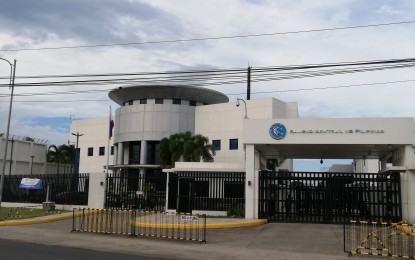
(PNA file photo)
MANILA – The Philippines is not expected to fail from payment of its foreign obligations despite the possibility of a recession because of improved fundamentals.
This, as economies around the world face depressed growth this year because of the economic impact of the coronavirus disease 2019 (Covid-19) global pandemic, Bangko Sentral ng Pilipinas (BSP) Governor Benjamin Diokno said.
“The Philippine economy might not escape a recession this year, but unlike most emerging economies, it is starting from a position of strength, and thus, will not risk a debt default as a result of the Covid-19 pandemic,” he said in a Viber message to members of the media on Saturday.
Economic managers forecast a zero to negative 1 percent output for the domestic economy this year because of the pandemic.
In 2019, the economy grew by 5.9 percent as measured by gross domestic product (GPD), while above 6 percent output was registered in recent years.
Diokno said the world economy is expected to register its deepest global recession this century as the pandemic is projected to result in “virulent mix of monumental debt-to-GDP ratio”.
Despite the expected rise of debt as proportion of domestic growth, he said the Philippines is seen to remain resilient because of the decline of debt-to-GDP ratio to 40.5 as of 2019.
“With the fiscal stimulus owing to the pandemic, and with the deficit-to-GDP ratio rising from 3.2 percent to 5.3 percent, the debt-to-GDP ratio might hit 47.0 percent, modest by international standards,” he said.
The government has formulated a four-pillar program economic recovery plan, which entails a PHP1.45-trillion worth of fiscal measures aimed to back economic recovery post-Covid-19 pandemic.
Part of the program is the disbursement of PHP205 billion worth of financial support to poor households and the vulnerable sector as well as a PHP51-billion wage subsidy program for employees of small businesses.
The four-pillar program will be financed partially by government savings and funds realigned from this year’s national budget as well as loans from multilateral lenders like the Asian Development Bank (ADB) and the World Bank (WB).
Diokno said the “Department of Finance has already raised some USD6.9 billion of Covid-19 related loans from multilateral and bilateral sources as of 24 April 2020.”
He said the country is “one of the few developing countries that can borrow from multilateral institutions at largely concessional rates.”
“As I said the Philippines was in a sound fiscal and monetary state when the pandemic hit the country,” he said.
Diokno said before the pandemic wreaked havoc globally, the government’s budget gap “was modest”, the “revenue base has been expanded with a series of new tax laws and improved revenue administration” and “the quality of expenditures has improved with focus on infrastructure spending and investment in human capital.”
He said “unemployment rate was at its lowest ever” and “poverty incidence goals were surpassed midway through the Duterte administration’s term.”
Domestic monetary and financial condition is “sound and stable” due to reforms instituted by the central bank in recent years, he said.
To help buoy the domestic economy, the BSP, this year alone, has slashed key policy by a total of 125 basis points and cut universal and commercial banks (U/KBs) reserve requirement ration by 200 basis points.
Despite these cuts, Diokno said the local currency remains steady against the US dollar and is the “second strongest currency (next to Japan) among 14 monitored Asian foreign currencies after the Covid-19 pandemic.”
He attributed the peso’s strength to the country’s “hefty Gross International Reserves (GIR)”, which as of end-February stood at USD87.61 billion, and the country’s strong economic fundamentals.
He said the country’s total GIR is expected to hit more than US$90 billion by end-2020.
Inflation this year is seen to average at the low end of the government’s 2 to 4 percent target, at 2 percent, due to continued decline in global oil prices, drop in non-oil prices and the effect of Covid-19 to domestic growth prospects.
It is seen to rise to 2.45 percent in 2021 “due to the projected strong recovery in domestic activity and higher liquidity growth.”
“The Philippines will likely follow a U-shaped economic recovery in 2021. The domestic economy could slow down in Q1 2020 and is projected to contract in Q2 and Q3 before gradually recovering in Q4 2020,” he said.
Diokno said that on annual basis, domestic growth is “expected to shrink by 0.2 percent in 2020 before it bounces back to about 7.7 percent as the impact of the government policy support measures gain traction.”
“The strong recovery is based on the assumption that the pandemic is contained in the second half of 2020,” he added. (PNA)
